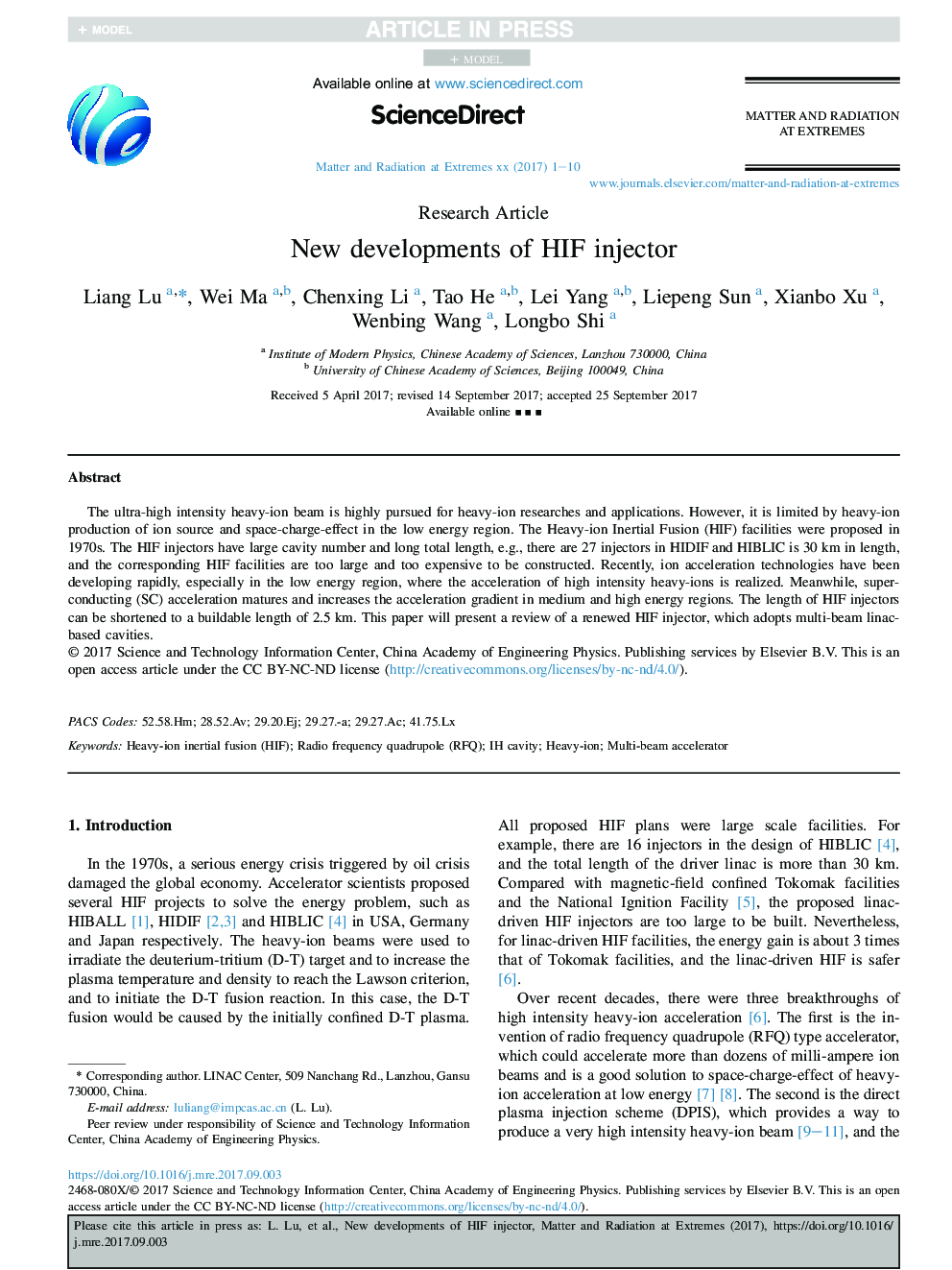| Article ID | Journal | Published Year | Pages | File Type |
|---|---|---|---|---|
| 8083591 | Matter and Radiation at Extremes | 2018 | 10 Pages |
Abstract
The ultra-high intensity heavy-ion beam is highly pursued for heavy-ion researches and applications. However, it is limited by heavy-ion production of ion source and space-charge-effect in the low energy region. The Heavy-ion Inertial Fusion (HIF) facilities were proposed in 1970s. The HIF injectors have large cavity number and long total length, e.g., there are 27 injectors in HIDIF and HIBLIC is 30Â km in length, and the corresponding HIF facilities are too large and too expensive to be constructed. Recently, ion acceleration technologies have been developing rapidly, especially in the low energy region, where the acceleration of high intensity heavy-ions is realized. Meanwhile, superconducting (SC) acceleration matures and increases the acceleration gradient in medium and high energy regions. The length of HIF injectors can be shortened to a buildable length of 2.5Â km. This paper will present a review of a renewed HIF injector, which adopts multi-beam linac-based cavities.
Related Topics
Physical Sciences and Engineering
Energy
Nuclear Energy and Engineering
Authors
Liang Lu, Wei Ma, Chenxing Li, Tao He, Lei Yang, Liepeng Sun, Xianbo Xu, Wenbing Wang, Longbo Shi,
